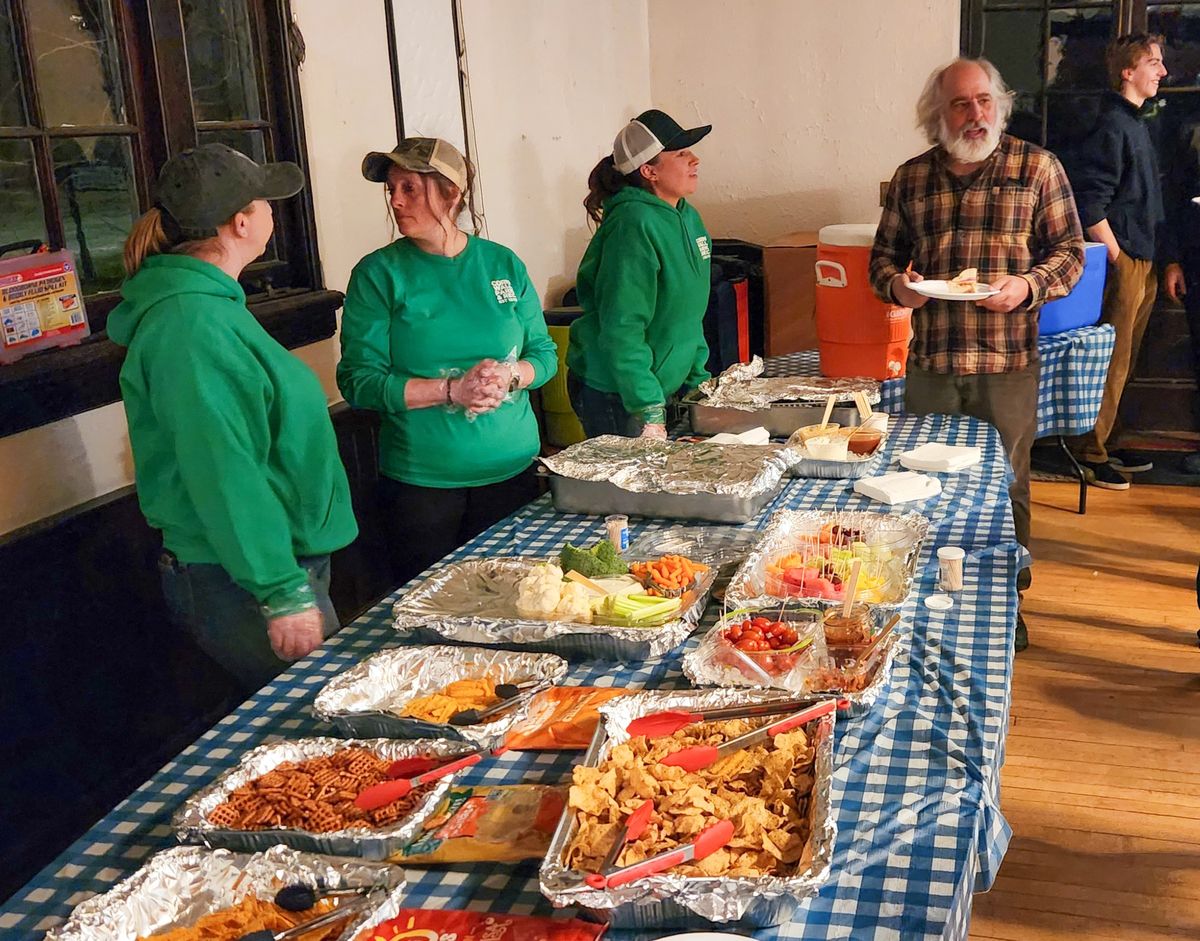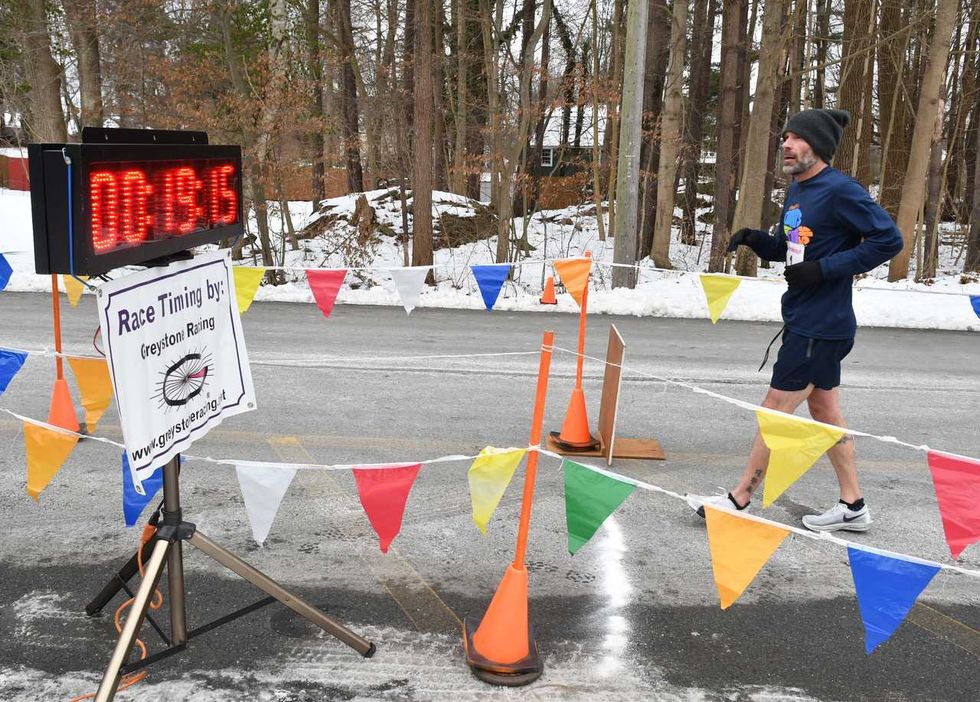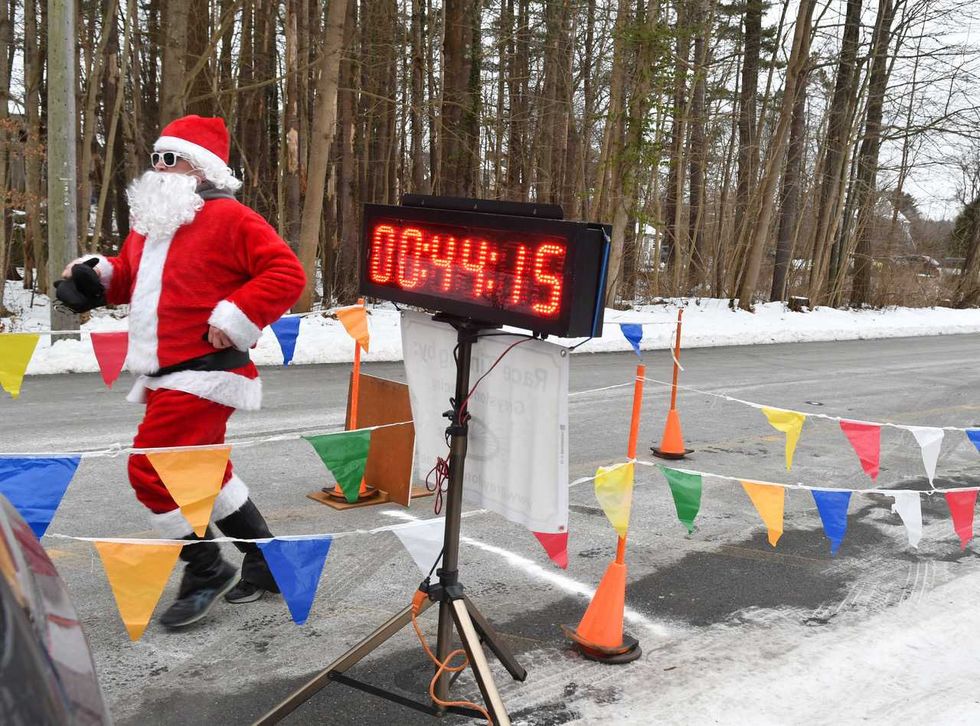Chili Cook-off raises alarm with Torrington Area Health District

Some legal and conforming foods served at the “Chili Cook-off.”
Sava Marinkovic

Some legal and conforming foods served at the “Chili Cook-off.”
“They can change the rules, but they can’t diminish our community spirit,”
Cornwall Park and Recreation Chair Michelle Shipp
CORNWALL — In a last-minute intervention, Torrington Area Health District put a lid on last weekend’s Chili Cook-off, extinguishing any would-be-fiery competition.
Fast-acting Park and Recreation volunteers pivoted and salvaged the evening that was hailed as “one of the best nights out” by an attendee.
Just days prior to the March 1 event, Cook-off organizers were alerted by TAHD representatives that, according to TAHD’s Food Code (which was made to conform to federal standards in 2023), the service of homecooked meals at public events is simply disallowed. But those involved, many of whom have scheduled and overseen similar events in the past, have found navigating this code to be anything but simple.
“The rules haven’t always been consistent or easy to understand,” said Cornwall Park and Rec Commission Chair Michelle Shipp, identifying the dense, 700-page Food Code as the primary resource that TAHD makes available for the quick and easy clarification of regulations.
“We have displayed approved signs or received exclusions from TAHD for previous events with homecooked food,” said Shipp, believing that adherence to prior guidance would ensure the compliance of the Chili Cook-off. But, when asked for comment, representatives from the TAHD asserted that “there has never been an avenue within the code for homecooked meals to be served to the public.”
Further confounding the issue were unclear distinctions between public and private; sharing and serving; cooking and warming. However, what has become especially concerning for community event planners is the less ambiguous distinction between home and commercial kitchens.
Even with rules around home kitchen usage now more clearly delineated, Shipp claimed that their adoption by the community would mean taking on an impracticable burden.
“We only have one publicly available commercial kitchen in Cornwall,” said Shipp, insisting that it would not be logistically possible for the Chili Cookoff to materialize if all participating cooks were forced to share this limited space. “We’re now clear on the rules,” said Shipp, “but this is not an acceptable policy for a community like ours.”
Cornwall, like the various rural towns that surround it, runs on tight budgets and enthusiastic volunteerism. A beloved and long-standing tradition of community potlucks forms the backbone of its yearly event calendar.
With limited municipal resources to expend on items like prepared food, the future of these events now seems uncertain. But Shipp has called on the community to advocate for its way of life.
Speaking from the stage at the Cornwall Town Hall on the evening of the quashed Cook-off, Shipp implored attendees, among them residents of other towns; members of other organizations and committees; to “think about what kind of events you hold, how often you have events with food,” and to reflect on how essential these events may be.
“This is going to affect all our towns,” Shipp continued, proposing that the greater community come to the State with a request for its particular needs and capabilities to be addressed.
There has been precedent, according to Shipp, for a coalition of towns to effect divergence from state regulations in areas like early voting, housing development, and waste management.
“The next step is to reach out to our representatives and ask them to do something about this issue, to adapt these regulations,” Shipp announced.
All the while, guests plated store-prepared food from a compliant buffet of sandwiches and sides; the hometown-fronted Glori Wilder Band tuning up over the murmurs of a growing crowd.
“They can change the rules,” called out Shipp, in closing, “but they can’t diminish our community spirit.”
Sealing this affirmation, the dancing began.
Runners line up at the starting line alongside Santa before the start of the 5th Annual North Canaan Santa Chase 5K on Saturday, Dec. 13.
NORTH CANAAN — Forty-eight runners braved frigid temperatures to participate in the 5th Annual North Canaan Santa Chase 5K Road Race on Saturday, Dec. 13.
Michael Mills, 45, of Goshen, led the pack with a time of 19 minutes, 15-seconds, averaging a 6:12-per-mile pace. Mills won the race for the third time and said he stays in shape by running with his daughter, a freshman at Lakeview High School in Litchfield.

Don Green, 64, of Red Hook, New York, was second among male runners with a time of 21:17 and a 6:52-per-mile pace. Becky Wilkinson, 47, of Southfield, Massachusetts, was the first woman to cross the finish line with a time of 22:16, averaging a 7:11-per-mile pace. Wilkinson finished fourth overall.
Margaret Banker, 52, of Lakeville, finished second among women runners with a time of 23:59 and a 7:44-per-mile pace.
Runners came from all over Connecticut, Massachusetts and New York. One runner listed home as London, England. Many were members of the Run 169 Towns Society, a group that is dedicated to completing races in every one of Connecticut’s 169 towns. Elizabeth Smith, 32, of Manchester, a member of Run 169, said this was her 162nd town.
“I started 10 years ago,” Smith said. Her husband, Daniel, 33, has run races in 73 Connecticut towns, now including North Canaan. He was eager to know where to get a good cup of coffee after the race.
Santa, who got a head start on the group of runners but finished next to last with a time of 44:14, has been a feature in the North Canaan race since it started five years ago.
The 5K proceeds from a start in front of the North Canaan Elementary School on Pease Street to course around the Town Hall parking lot, up West Main Street past the transfer station to the state line and back. Cheryl Ambrosi, 45, of Danbury, was the last to cross the finish line with her dog Benji. “It was so much fun,” she said as she ended, even though she didn’t catch Santa.

The Torrington Transfer Station, where the Northwest Resource Recovery Authority plans to expand operations using a $350,000 state grant.
TORRINGTON — The Northwest Resource Recovery Authority, a public entity formed this year to preserve municipal control over trash and recycling services in northwest Connecticut, has been awarded $350,000 in grant funds to develop and expand its operations.
The funding comes from the Department of Energy and Environmental Protection via its Sustainable Materials Management grant program. It is intended to help the NRRA establish operations at the Torrington Transfer Station as well as support regional education, transportation, hauler registration and partnerships with other authorities.
Founded by the City of Torrington in May 2025, the NRRA was established to oversee regional municipal solid waste management. Its creation followed a $3.25 million offer by USA Waste & Recycling to purchase the Torrington Transfer Station — a sale that would have privatized trash services in the region.
The proposed sale was initially approved by the MIRA Dissolution Authority, the entity responsible for dissolving the state’s former Materials Innovation and Recycling Authority, which owned the Transfer Station at the time. Before the transaction could close, the state intervened and directed that the facility’s operating permit be assigned to the NRRA to preserve a publicly controlled alternative.
MIRA has since dissolved, and the Transfer Station is currently operated by the state Department of Administrative Services. Many towns in northwest Connecticut have expressed interest in joining the NRRA. As of December, Torrington and Goshen were the only two municipalities in the authority.
At the Dec. 11 meeting of the Northwest Hills Council of Governments (COG) — a regional planning body representing 21 municipalities in northwest Connecticut — Director of Community and Economic Development Rista Malanca encouraged more towns to sign on.
“We need towns to join the Northwest Resource Recovery Authority to show your support, show this is what you want to do,” Malanca said.
Salisbury First Selectman Curtis Rand said his municipality is planning a town meeting in January to vote on a resolution to join the NRRA. Cornwall’s Board of Selectmen recently discussed scheduling a town meeting in the winter for the same purpose. Sharon, Falls Village and North Canaan have also expressed continued interest in pursuing a public option.
Kent is the northernmost member of the Housatonic Resource Recovery Authority, a regional solid waste authority representing 14 municipalities stretching south to Ridgefield. COG towns expressed interest in joining HRRA in 2024, but they were denied and set out to develop the NRRA.
“We also have been having conversations with the Capital Region Council of Governments and the Naugatuck Valley Council of Governments to think about how we can use existing resources, maybe some of these grant funds, to bring in shared resources or shared staffing that will help with some of the recycling coordinating efforts,” Malanca said.
With grant funds secured, NRRA aims to grow to a point that it can take over operations at Torrington Transfer Station to serve as a regional hauling hub. What happens to the trash after that has yet to be determined. Currently, it is being shipped to a landfill out of state. The existing municipal refuse hauling contracts that were established with the state expire in 2027.
The Salisbury Winter Sports Association (SWSA) will host its annual Junior Jump Camp, a two-day introduction to ski jumping, on Saturday and Sunday, Dec. 27 and 28, from 9 a.m. to 2 p.m. at Satre Hill in Salisbury.
The camp is open to children ages 7 and up and focuses on teaching the basics of ski jumping, with an emphasis on safety, balance and control, using SWSA’s smallest hill. No prior experience is required.
The cost is $50 per child and includes instruction and lunch on both days. For more information or to register, visit www.skireg.com/swsa-camp or email info@jumpfest.org
Jesse Bunce, first selectman of North Canaan.
LITCHFIELD — The Northwest Hills Council of Governments welcomed six newly elected municipal leaders Thursday, Dec. 11, at its first meeting following the 2025 municipal elections.
The council — a regional planning body representing 21 towns in northwest Connecticut — coordinates transportation, emergency planning, housing, economic development and other shared municipal services.
Barkhamsted First Selectman Meaghan Cook, Goshen First Selectman Seth Breakell, Kent First Selectman Eric Epstein, Norfolk First Selectman Henry Tirrell, North Canaan First Selectman Jesse Bunce and Torrington Mayor Molly Spino were each elected to their post in November.
They filled the seats of their predecessors on the COG, who were each given a toast of appreciation: Nick Lukiwsky (Barkhamsted), Todd Carusillo (Goshen), Marty Lindenmeyer (Kent), Matt Riiska (Norfolk), Brian Ohler (North Canaan) and Elinor Carbone (Torrington).
COG Executive Director Rob Phillips said the outgoing members were given a going away mug that read “You’re living the dream still.” Members voted to appoint Warren First Selectman Greg LaCava to fill a vacancy on the Council’s Executive Committee. COG members voted by paper ballot, and LaCava defeated Burlington First Selectman Doug Thompson for the vacant seat.